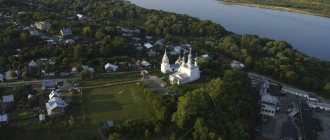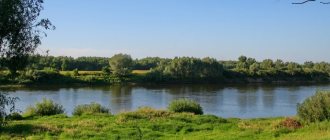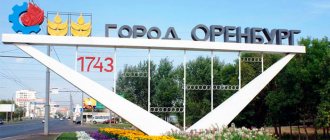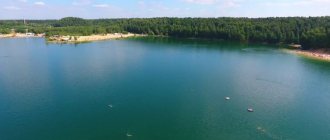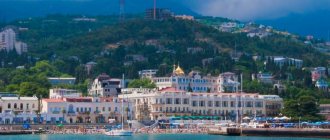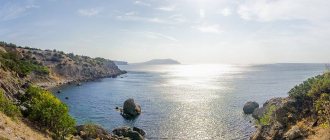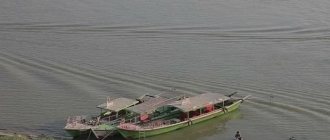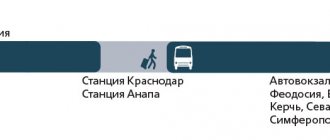Every person who has studied geography knows that the border between Europe and Asia passes through the Southern Urals, the details are not known to everyone, namely that it passes through the city of Orenburg, the capital of the Orenburg region.
In order to find out where the city of Orenburg is located, just open a world map and find the Republic of Kazakhstan. On the border of Russia and Kazakhstan is the Orenburg region, the Ural River. On it stands Orenburg, built on the spot where the Sakmara River merges with the Urals.
Number
Orenburg has the status of the largest city, since the population exceeds half a million citizens. The exact number of people for 2022 is 577,388 people. Since 2012, there has been a constant increase in population.
Interest in the settlement is ensured by developed industry, as well as a large number of cultural buildings, including theaters, museums, concert halls, libraries, galleries and exhibition centers. In the center there are buildings predominantly of old architectural styles.
Bus station
There are two bus stations in Orenburg - a suburban one on Tereshkova Street, 10k1 and an intercity (central) one on Elevatornaya Street, 2. From the suburban bus station, buses go to nearby settlements - Aschibutak, Beregovoy, Vyazovka, Zarechye, Ostrovnoye, Repino, Chebenki, Chkalov, etc. .
From the intercity bus station, flights are carried out in 9 main directions, among which there are international ones to Kazakhstani cities:
- Orskoe. Buses to Orsk, Gai, Novotroitsk, Novoorsk, Mednogorsk and other intermediate settlements.
- Sharlykskoe. The main directions are Kazan, Matveevka, Naberezhnye Chelny, Samara, Buguruslan.
- Ufa. Buses to Ufa with stops in intermediate settlements.
- Buzulukskoe. Routes to Buzuluk, Buguruslan, Saratov, Togliatti, Izhevsk, Sorochinsk and other cities.
- Alexandrovskoe. Routes to the villages of Aleksandrovka and Yafarovo.
- Tyulganskoe. Buses to Magnitogorsk, Repyevki, Troitsk, Tyulgan, Tugustimir, etc.
- Sakmara. Routes to the villages of Grigorievka, Kr. Zhitnitsa and Nikolskoye.
- Ilekskoe. Buses to Yasnaya Polyana, the village of Kardailovo and the Kazakh city of Uralsk.
- Aktobe. Buses to Kazakhstan's Aktyubinsk (Aktobe) via Akbulak.
Compound
Orenburg is a multinational settlement where representatives of more than a hundred different nationalities live. Most of the residents are Russians, with slightly fewer Tatars. Also present are Kazakhs, Ukrainians, Bashkirs and many others. Thanks to the different national composition, a rather interesting culture is formed, which contains the characteristics of a wide variety of nationalities.
Despite the presence of a large number of ethnic groups, conflicts do not arise between representatives of different nationalities in Orenburg. On the contrary, residents often celebrate Easter together, despite their attitudes to different religions. At the same time, Russians really like to put chak-chak on the festive table - a signature dish of the Tatars.
It is also noted that residents of Orenburg know at least two different unrelated languages. The first of them is Russian, since it is state-owned and education in universities and schools is conducted in it. The second language is usually spoken at home, with family or at major citywide holidays and events.
You can also notice that representatives of different ethnic groups work in different enterprises. Russians most often work as employees of industrial enterprises, but are least likely to work in agriculture. Kazakhs and Mordovians are the opposite.
Monuments erected in the city
1. The monument, where Pushkin and Dal stand side by side, was erected for the 255th anniversary of the city; two representatives of Russian literature stand on the pedestal. Both of them provided an incentive to improve the Russian language.
monument to Pushkin and Dahl
Alexander Sergeevich, after visiting Orenburg, created the story “The Captain’s Daughter,” a work that is known to every Russian. V.I. Dal, known as the compiler of an explanatory dictionary, worked for several years as a military doctor in Orenburg.
2. The monument to Yuri Gagarin, the first man to fly into space, was opened on April 12, 1986. Yuri Gagarin graduated from the local flight school and received a diploma with honors.
The monument depicts the figure of an astronaut dressed in a spacesuit, his arms raised up. Behind there are two steles that identify a rocket making a space flight.
3. Monument to the Cossacks of Orenburg, installed in the park in the 7th year of the 21st century. The monument is dedicated to the Cossacks who defended the eastern borders of the Tsarist Empire of Russia from external enemies. The sculpture represents a Cossack warrior sitting on a horse.
Monument to Chkalov
4. The monument to Chkalov, the famous pilot, has been located on the embankment of the Ural River since 1954. The bronze figure was cast in the capital of the USSR and then installed. The most grandiose monument in Orenburg, the height of the pedestal is 7 meters, and the standing figure of the pilot rises 6 meters.
5. Elizabeth Gate, given to the city by Elizabeth the Russian Empress. The stone gate was supposed to symbolize the transition from the European part to the Asian part of the world.
The design of the gate consists of two powerful pillars with niches containing sculptures of angels; a lintel with a bas-relief is installed between the gate supports. Since 2008, after restoration, the Elizabeth Gate received its original appearance.
Cities
The largest city in the Orenburg region (and its administrative center) is Orenburg, founded in the mid-18th century - 1743. For 19 years (from 1938 to 1957) it was called Chkalov, after which the previous name was returned.
The second most important and largest settlement is Orsk. The number of its inhabitants is not very high, but it occupies a fairly large area, ahead of Novosibirsk and Kazan. The third place is occupied by Buzuluk, located at the intersection of the Buzuluk and Samara rivers. Next to it there is a popular national park called “Buzuluksky Bor”.
The fourth largest settlement located near Orsk is Novotroitsk, where metallurgical industry enterprises are located. Buguruslan is the fifth settlement, located in the western part of the region, and is a major center of the oil industry.
Sol-Iletsk, as the name suggests, is a settlement that is the main producer of salt in the Russian Federation. On its territory there are many resorts and sanatoriums, which are chosen by many Russians for health improvement and prevention. The second famous attraction, although not the most positive, is the Black Dolphin prison, where life prisoners are sent.
Abdulino is a large settlement with a large number of food industry enterprises, railway transport and construction materials. The last city in the Orenburg region is Yasny, where the base of the strategic missile forces is located. There has also been a cosmodrome here for fifteen years, used to launch satellites into Earth orbit.
Orenburg
Home→City→About the city
The administrative center of the Orenburg region is the city of Orenburg, the first stone of which was laid under Empress Anna Ioannovna on April 19 (30), 1743, in the area between the Yaik and Sakmara rivers.
It was from that time that the history of the capital of the multinational steppe region began.
The fate of Orenburg is unusual. It was founded three times as a fortress, four times became a provincial and regional center, three times a district center, three times renamed, three times awarded the highest awards of the Motherland, was the center of the district of the Middle Volga region, the “steppe capital” of the Kirghiz (Kazakh) Autonomous Soviet Socialist Republic from 1920 to 1925.
Orenburg can also be called special because it is located simultaneously in two parts of the world: Europe and Asia. The historical part of the city is connected to the Trans-Ural Grove by a pedestrian bridge across the Ural River, on which there is a symbolic border sign: two border pillars with the coat of arms of Orenburg. On one there is the inscription “Europe”, on the other - “Asia”.
Since its inception, Orenburg has performed important government tasks:
- defended the southeastern borders of Russia;
— was an international trade center, a conductor of the Eurasian policy of the Russian state. The Great Silk Road passed here;
— during the Great Patriotic War, more than 40 large industrial enterprises from the western regions of the country were evacuated to Orenburg.
The paths of such famous people in Russian history as N.M. Karamzin, I.A. Krylov, T.G. Shevchenko, G.R. Derzhavin, V.I. Dal, A.N. Pleshcheev crossed paths with Orenburg in different years.
In 1833, Orenburg was visited by the great Russian classic A.S. Pushkin, who collected materials about Pugachev’s uprising. After his trip, Pushkin wrote the famous story “The Captain’s Daughter” and “The History of the Pugachev Rebellion.”
The stage of the Orenburg Drama Theater became the site of brilliant performances by M.M. Tarkhanova and P.A. Strepetova. The great actress A.Ya. lived and played in Orenburg. Sadovskaya. L.S. Bronevoy - theater and film actor, People's Artist of the USSR - after graduating from the Tashkent Institute of Theater Arts. A.N. Ostrovsky in 1950, he was assigned to work at the Orenburg theater.
The world-famous cellist and conductor Mstislav Leopoldovich Rostropovich, an honorary citizen of Orenburg, often came to the city where he spent his wartime childhood. Now in the house where the family of evacuated musicians lived, a memorial museum-apartment of Leopold and Mstislav Rostropovich has been opened.
On the basis of the Music School, organized in 1927 and having a rich history and musical traditions, the Orenburg State Institute of Arts named after L. and M. Rostropovich was opened in April 1997. It was in this oldest educational institution in Orenburg that during World War II he first studied in his father’s class, and then worked as a world-famous musician. The annual Orenburg International Competition for Young Performers is rightfully considered the calling card of the city. L. and M. Rostropovich, which was conceived with the direct participation of the Great Maestro.
From 1938 to 1957, the city was named Chkalov in honor of the famous Soviet pilot. Despite the fact that Valery Pavlovich himself did not live in Orenburg and had never been here, the name and memory of the Hero of the Soviet Union were immortalized on Orenburg soil.
Six-meter bronze sculpture of V.P. Chkalova on a seven-meter pedestal was initially installed on the station square, and in the early 60s it was transported to the Boulevard. Ya. M. Sverdlov (embankment of the Ural River), where it is located to this day.
At the Orenburg Higher Military Aviation Flight School named after. I.S. Polbina received the profession of pilot, the first cosmonaut on the planet, Hero of the Soviet Union, Colonel Yuri Alekseevich Gagarin - an honorary citizen of the city. In 1957, Yuri Gagarin married Orenburg resident Valentina Goryacheva. Subsequently, they repeatedly visited the Orenburg land.
In 1961, the MiG-15 aircraft, the fighter that cadet Gagarin flew in 1957, was installed on a pedestal at the aviation school. The House-Museum of Cosmonautics was also opened there, the exhibition of which includes Gagarin’s personal belongings: a training space suit and flight equipment (helmet, oxygen mask, flight suit jacket, G-suit bag), donated by him personally during his next visit to his native school on October 13 1962. The apartment museum of Yu. and V. Gagarins was opened on April 12, 2001. The wife of the planet's first cosmonaut donated the original items to the museum's exhibition.
The hallmark of Orenburg is the down products of local craftswomen, the fame of which has spread throughout the world. Hand-patterned knitting has been common here since the 18th century. Unique Orenburg scarves made of goat down have no equal.
Fine workmanship, original patterns, beauty of finishing, strength and ability to retain heat are the main characteristics of Orenburg down products.
Openwork scarves - “cobwebs” - are endowed with special grace. Despite its large size, the “web” can be passed through a wedding ring and easily placed in a goose egg shell.
Today Orenburg is the largest political and industrial center not only of the Orenburg region, but also of the entire Ural-Volga region.
Its sister cities are Orlando (Florida) in the USA and Khujand in Tajikistan, and its partner cities, with which agreements on cooperation in the economic and social fields were signed, are Ufa (Bashkiria), Kazan (Tatarstan) and Uralsk (Kazakhstan).
A significant contribution not only to the economy of the city, region, but also to the country as a whole is made by such large industrial enterprises as the Orenburg Helium and Gas Processing Plant, CJSC Uralneftegazprom, OJSC, OJSC Gidropress, OJSC PO Strela, OJSC Drilling Plant equipment" and other enterprises.
The healthcare system of the city of Orenburg is a wide network of hospitals, centers and clinics of various forms of ownership, allowing for the treatment and prevention of diseases using the most modern equipment. Via satellite communication, the patient can receive a full-fledged television consultation with a medical specialist from any country without leaving the building.
16 institutions, both multidisciplinary and single-disciplinary, are located in the city: a number of clinical hospitals, emergency hospitals, a perinatal center, a rehabilitation hospital, an infectious diseases hospital, a Center for Medical Prevention, a children's dairy kitchen, dental clinics and other healthcare institutions based on of which two Health Centers for adults began operating in 2010, a Health Center for Children was organized and equipped, which began operations in January 2011. Maternity hospital on the street 8 March is one of the 4 oldest maternity hospitals in Russia. Today it is the most comfortable and technically equipped maternity hospital in the Orenburg region. And in 2010 it was recognized as the Best Maternity Hospital in the Russian Federation.
Modern Orenburg is a center of science and higher education.
The city has a developed network of research institutes. Applicants have a choice of a large number of higher educational institutions, including the actively developing Orenburg State University, the Orenburg State Medical University, pedagogical and agricultural universities, institutes of various profiles, the country's first Presidential Cadet School, opened on September 1, 2010, the Orenburg Theological Seminary, as well as a large number of secondary specialized educational institutions of various profiles.
Residents and guests of the city are provided with a wide range of opportunities for cultural recreation.
Since the 20s of the 19th century, Transural Grove, located on the Asian shore of the Urals, still remains a favorite vacation spot for city residents.
The beach along the coast, children's playgrounds, cozy cafes and walks in the shade of alleys that protect from the summer heat attract residents and guests of the city.
Today you can get from one bank to the other not only via an iron bridge, built in the 80s of the 20th century on the site of a wooden bridge that once connected the two banks, but also by cable car - one of the most comfortable and modern cable cars in Russia.
The Orenburg Children's Railway, opened on July 26, 1953, was and remains one of the longest children's railways in Russia. The length of the railway track is 5.6 km. The road runs in the floodplain of the Ural River and connects a suburban recreation area with the city center with its final destination at the Kirovskaya station, where several children's health camps are located. The main station, Komsomolskaya, is located on the embankment of the Ural River not far from the pedestrian bridge connecting the two parts of the world “Europe” and “Asia”. Trains operate from the beginning of June to the end of August. During the summer months, parents can visit their children in health camps, tourists and city guests go to the beach and for walks in beautiful floodplain areas, summer residents go to their plots - and all this thanks to the children's railway. The trip becomes more exciting also for the reason that the guides here are children who are specially trained in this profession.
Today, the city has a Drama Theater named after M. Gorky, a Tatar Drama Theater named after M. Faizi, a Musical Comedy Theatre, a State Puppet Theatre, a Municipal Puppet Theater “Pierrot”, a circus, a philharmonic society, and large-format cinemas.
Musical groups such as the virtuoso Bayanist Trio (artistic director: Semenov Alexey Alexandrovich - professor, director of the music college of the Orenburg State Institute of Arts named after L. and M. Rostropovich), Municipal Brass Band "Orenburg" (artistic director and conductor: Khripun Viktor Ivanovich - Professor of the Department of Orchestral Wind and Percussion Instruments of the Orenburg State Institute of Arts named after L. and M. Rostropovich, Candidate of Philosophy, Honored Worker of Culture of the City of Orenburg), Municipal Ensemble of Russian Song and Dance "Russian Expanse" (director - Elena Vladimirovna Vasilyeva) and The chamber music ensemble “Elegy” (artistic director: Kalugin Alexander Fedorovich) is an original and vibrant musical group that has received recognition not only in Russia, but throughout the world.
The Orenburg State Academic Russian Folk Choir has toured dozens of foreign countries: China, North Korea, Japan, USA, Germany, France, Spain, Greece, Belgium and other countries. The song “Orenburg Down Shawl”, which made him famous, became world famous and became the musical symbol of the Orenburg region. The authors of the song were the Soviet composer, People's Artist of the USSR Grigory Fedorovich Ponomarenko and the poet Viktor Fedorovich Bokov, who in the 60s prepared a program for the Orenburg choir. And in the late 70s, composer G.F. Ponomarenko wrote the melody of the song “The Orenburg Steppes Have Bloomed,” which has been ringing over the Ural River for the past three decades, when the large bell on the chimes of the former guardhouse building, now the Museum of the History of the City of Orenburg, chimes every hour.
The municipal chamber choir under the direction of Olga Stanislavovna Serebriyskaya, Honored Worker of Culture, Honored Artist of the Russian Federation, Professor of the Department of Choral Conducting at the Orenburg State Institute of Arts named after L. and M. Rostropovich, became a laureate, prize-winner and winner of many All-Russian and international festivals and competitions. During its existence, it has toured in Chelyabinsk, Ufa, Yekaterinburg, Moscow, St. Petersburg, Veliky Novgorod, Ukraine, Kazakhstan, Spain, Italy. The team amazes with their professionalism and skill in embodying musical images.
Museums preserve the rich history of the city of Orenburg. The collection of the Museum of Fine Arts includes works by remarkable artists: I.K. Aivazovsky, V.G. Perova, F.A. Malyavina, V.G. Polenova, A.K. Savrasova. A significant place in the museum’s exhibition is devoted to the works of Orenburg artists: N.P. Ledyaeva, A.F. Stepanova, N.G. Petina, Yu.P. Grigorieva, V.T. Neither do others. A unique collection of naive paintings by Orenburg artists, collected over the past two decades, is stored here. Name S.G. Stepanov is included in the world encyclopedia of naive art.
The Orenburg Museum of Local Lore contains such rarities as an authentic death mask from the face of A.S. Pushkin, the cannon of the Pugachev army, the ladies' table of the imperial palace of the early 19th century, the sabers granted by Empresses Elizabeth Petrovna and Catherine II to the Orenburg Cossacks, as well as a collection of flora and fauna of the Orenburg region.
In the Museum of the History of the City of Orenburg - the building of a former guardhouse - there is an exhibition dedicated to the peasant war led by Emelyan Pugachev (1773-1775).
A model of the cage in which Emelyan Pugachev was delivered to Moscow by A.V. is displayed as an exhibit. Suvorov and sentenced to execution according to the verdict approved by Catherine II, as well as a portrait of Pugachev, painted over the portrait of Catherine II.
The luminaries of the Russian stage - the famous composer, People's Artist of Russia, laureate of the State Prize of the Russian Federation, Honored Artist of the RSFSR David Fedorovich Tukhmanov and poet, playwright, member of the Union of Cinematographers of Russia Yuri Sergeevich Entin - wrote the anthem “Live, Orenburg!” ,
which was approved on April 27, 2006 by deputies of the Orenburg City Council.
The anthem of the city of Orenburg is its official symbol.
Wonderful architectural monuments that have been preserved since the founding of the city, monumental art, and local traditions create a special unique atmosphere of the city and rightfully allow us to consider Orenburg a unique and inimitable city with a rich and carefully preserved culture.
Dynamics by year
You can track the dynamics of population changes using the federal state statistics service or on the website of the interdepartmental information and statistical system.
In 2003, the city had a population of 542,700. Until 2022, the dynamics were either positive or negative, but since 2012 there has been an annual increase in residents. At the moment, 572,188 people have registration.
What was the Orenburg region called in the old days?
Until December 4, 1957, the Orenburg region was called Chkalovskaya.
Interesting materials:
How to fill out information for purchasing a plane ticket? How to charge an iPhone for the first time after purchase? What documents need to be checked when buying a summer house? What documents are needed to buy a train ticket? What documents are needed to buy a train ticket? What documents are needed to obtain a passport to LPR? What debts do debt collectors buy? What are the best bananas to buy? Which is better to buy large or small eggs? What cars are best to buy in Need For Speed Most Wanted?
Religious composition
Due to the rather heterogeneous ethnic composition, representatives of a wide variety of religions live in the settlement. Most communities are located in large cities of the Orenburg region - in Orenburg itself and Orsk, but there are also communities in villages.
At the moment, more than 300 associations have official permission to conduct their activities. The religious composition does not coincide one hundred percent with the ethnic composition, but most of all in the Orenburg region, representatives of the Slavic and Finno-Ugric peoples accepted Orthodoxy. The Turkic population professes Islam.
Geographical location of Orenburg, climate
The Orenburg region is a border region; the border with Kazakhstan stretches for 1876 kilometers. To answer the question of where the Orenburg region is located, you need to know its borders. The region borders the Samara and Chelyabinsk regions, the republics of Tatarstan and Bashkortostan.
Orenburg, the capital of the region, is a beautiful city. The geographic coordinates are: 51.7727 degrees north latitude, 55.0988 east longitude. Knowing these coordinates it is easy to get an answer to the question of where Orenburg is located on the map.
The Europe-Asia pedestrian bridge crosses the Ural River. Orenburg is the link that connects these two parts of the world; it has a developed railway network, an airport with international and local lines.
The climate in the capital is moderately continental, sometimes changing to sharply continental, so the city experiences sudden temperature changes. In summer, which begins in June and ends at the end of August, the heat in some places reaches up to +42 degrees.
Winter begins in November, when the first snow falls, and ends in April; temperatures can drop to -49 degrees in some months. Steppes where sheep graze and forest-steppes are located around the city, which is why Orenburg became famous for its down scarves.
Fertility and mortality
According to official data, 3,671 people have died in the city over the past six months. This figure is less than last year's figures, but the birth rate is also declining. The growth in the total number of residents is due to migration from neighboring regions.
People go here to enroll in higher education or to find a better job. Also, do not forget about the different ethnic composition of the population - some families have relatives from other countries who come and stay here, choosing this city as their permanent place of residence
Gender and age
In Orenburg, there is currently an uneven gender composition. There are about 252 thousand male citizens, about 302 thousand female citizens. This is a completely normal indicator for the Russian Federation, in most cities, which usually have more women than men living in them.
The age composition of Orenburg is as follows. 15% of all residents are children, 17% are elderly people. The remaining 68% is the working population. Based on these statistics, it can be noted that most of the residents are young people who are either already working or will soon join the ranks of highly qualified specialists. Also, according to available statistics, it turns out that families with one child predominate, but an increasing number of parents are deciding on a second or third child.
Region data
